1. Intersectionality
Climate change deepens existing inequalities in our society, widening the gap between rich and poor. It worsens social injustices and creates new challenges for already marginalised groups (see Intersectionality and Climate Justice). CSOs, which support those experiencing multiple forms of discrimination, play a critical role in advocating for climate justice.
As climate change intensifies these issues, the pressure on CSOs grows. Marginalised communities, often denied adequate resources to address these challenges independently, face significant strain as climate impacts destabilise already fragile social and economic support systems. This places increasing demands on the services and systems provided by CSOs (See: A strong community sector for a safe climate)
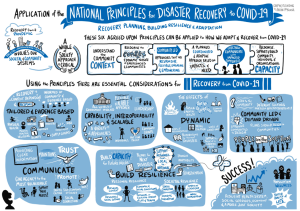
(Source: Youth Toolkit, Adaptation Portal)
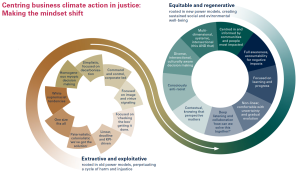
(Source: Climate Justice Playbook)
Advocating for climate justice is essential because it ensures that those who are most at risk from climate change receive the protection and support they need. This involves participating in discussions with decision-makers to garner support for implementing actions on the root causes of climate injustice that can lead to long-lasting transformative changes, such as embedding social justice, climate justice and equality in processes and outcomes. By addressing the broader issue of social inequality, climate justice advocacy promotes a fairer and more equitable society.
2. Steps for building climate justice advocacy skills in CSOs
Step 1. Set up a climate justice advocacy team
To effectively advocate for climate justice within your organisation and the community, start by setting up a dedicated Advocacy Team. This team should be diverse, bringing together individuals with different backgrounds and expertise to ensure a well-rounded approach. A climate justice advocacy team is essential because it centralises climate justice within your organisation’s mission, ensuring that advocacy efforts are intentional and focused. By increasing your team’s knowledge of climate justice issues and advocacy strategies, members can better grasp how climate change intersects with systems of oppression, such as racism, sexism, and economic inequality. Resources such as the Climate Justice Alliance and 350.org offer valuable materials and training opportunities.
Engage in discussions to identify the most pressing issues for the people your organisation serves (see Identifying Climate Injustices in your Community) and determine priorities.
Read more:
Advocacy Toolkit (WA Council of Social Service, 2024)
The Four Roles of Social Activism (The Commons – Social Change Library)
Resources for First Nations Justice: Allyship Resources (Envirojustice)
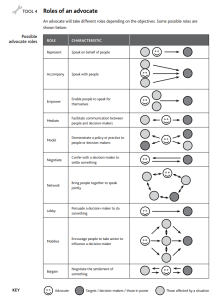
(Source: Advocacy Toolkit, Roots – Tearfund)
Step 2. Using an intersectional Approach for climate justice advocacy
Intersectionality is crucial for climate justice advocacy because it recognises that the impacts of climate change are shaped by intersecting systems of oppression, such as racism, sexism, classism, and colonialism. These systems create unequal outcomes, putting certain groups at more risk from the effects of climate change. By applying an intersectional lens, climate justice advocacy ensures that responses address the structural inequalities that exacerbate climate impacts. This approach is guided by principles like human rights, global solidarity, intergenerational equity, corporate accountability, policy change, community empowerment, and cultural preservation. Together, these principles ensure that climate justice efforts challenge existing power structures, are inclusive, and effectively address the diverse realities shaped by these systems of oppression.
Principles for intersectional advocacy:
Equity and Fairness: Climate change impacts are not distributed equally. Communities already experiencing marginalisation, often those least responsible for contributing to climate change, bear the brunt of its effects. Climate justice advocacy aims to ensure that responses to climate change are fair, just and consider the needs of the most marginalised populations.
Human Rights: Climate change can threaten basic human rights, such as the right to life, health, food, and shelter. Advocacy seeks to safeguard these rights and prevent further disproportionate harm to communities that are already disadvantaged.
Global Solidarity: Climate change is a global challenge that requires international cooperation. Climate justice advocacy emphasises the interconnectedness of nations and encourages collaboration to address the shared responsibility of mitigating climate change and adapting to its impacts.
Intergenerational Equity: Future generations will bear the long-term consequences of current climate actions. Advocacy efforts focus on ensuring that the burden of addressing climate change is not unfairly shifted to future generations so they inherit a sustainable and habitable planet.
Corporate Accountability: Advocacy holds corporations and industries accountable for their contributions to climate change. It urges them to adopt sustainable practices, reduce emissions, and take responsibility for the environmental and social impact of their operations, including a concrete financial commitment to undertaking structural changes to their practices.
Policy Change: Climate justice advocacy plays a crucial role in influencing policies at local, national, and international levels. It strives to shape policies that prioritise environmental sustainability, social equity, and the well-being of communities.
Community Empowerment: Advocacy empowers communities to actively participate in decision-making processes related to climate change. It ensures that those directly affected by environmental issues have a voice and are involved in developing and implementing solutions.
Cultural Preservation: Aboriginal and Torres Strait Islander communities and local communities often have unique relationships with their environments. Climate justice advocacy seeks to protect and respect diverse cultural practices and knowledge, recognising their value in promoting sustainable and climate-resilient practices.
Step 3. Identify climate injustice in your community
Visit the resource Identifying Climate Injustices in your Community to learn about specific issues facing your community that can inform your climate justice advocacy.
Use a Problem Definition Tool to help you determine the root cause of the problem and plan relevant advocacy and action needed. Some problem-determination tools are the 5 WHYs strategy, a SWOT Analysis, Mind Mapping, Brainstorming, the Fishbone Diagram (or Cause and Effect Diagram), and Affinity Mapping.
Step 4. Determine climate justice priorities and actions in collaboration with others in your organisation
Now that you understand the issues facing your community and the root causes of those issues, you can identify your priorities and brainstorm the advocacy approaches you will undertake. For example, if your organisation has a Lived Experience Advisory Group and/or an Aboriginal Advisory Group, these are ideal people to engage in order to co-develop an advocacy action plan.
Also visit:
- Processes for Lived Experience Engagement
- Engaging Aboriginal and Torres Strait Islander Peoples
- Climate Justice Principles Team Workshop
- Dimensions of climate justice
Step 5: Implement internal climate justice campaigns
The best place to start is within your own organisation. Advocate for Climate-Just Processes and Outcomes internally, such as inclusive programs and practices, shifts in power dynamics and decision-making, resource redistribution, transition to renewable energy, initiating or joining community-owned renewable energy projects/planning, sustainability in social housing, climate-safe housing (e.g., insulation, and air conditioning), quality low-energy appliances, etc. Use other sections of this toolkit to inspire and develop your internal climate justice campaigns.
Useful Resources:
Understanding Climate Impacts on Social Injustice and Intersectionality
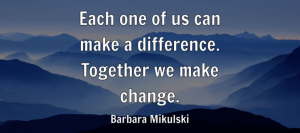
Step 6. Know your partners in climate justice advocacy and help strengthen existing collaborative networks
CSOs can partner with other community organisations and organisations, NGOs and Unions to drive collective action.
External climate justice advocacy, campaigns and demands
- Ask your government to join the net-zero coalition in line with the Paris Agreement.
- Ask your city officials to upscale local adaptation plans and join the Race to Resilience.
- Use your voice and your vote to push for credible climate action.
- Ask your city officials to set net-zero targets and join the Race to Zero.
- Develop or sign a climate justice declaration (Example: Community Sector Climate Change Declaration)
- Write a letter to your elected representative raising the issue of peat extraction.
- Example letter for advocacy – RACGP – Climate change is a major risk to our healthcare system
Lobby Decision Makers: The Commons Social Change Library – Supporting Effective Community Action describes the process of Lobbying as follows:
- Gather like-minded people
- Clarify the group’s goals and obtain consensus
- Resources: Consider the resources the group will need, such as money, equipment, access to computers, etc.
- Do your homework
- Establish the group’s credentials. For lobbying to be successful, there needs to be a perception of some equality of power.
- Establish a plan for your lobbying effort. Use the five Ws: who, what, when, where, why, and how.
- Use a variety of tactics (written materials, e.g. letters, submissions, media, flyers, posters, newsletters; verbal communications, e.g. phone calls, interviews, forums)
- Know your enemy
Read more on lobbying:
- Lobbying Process Guide (The Change Agency – Supporting Effective Community Action)
- Lobbying. What’s it all about? (Friends of the Earth)
- Information on Lobbying in WA
Find your Partners:
Talk to your networks and undertake desktop research to identify organisations and projects already active in this space.
Visit Collaborating with other Organisations
Step 7. Develop your own external campaign
“In a nutshell, campaigns are sustained efforts
at a specific social justice goal.
Campaigns are a powerful way of strategically building capacity, developing experience,
and laying the groundwork for future movements.
Simultaneously, campaigns win solid victories for social justice”.
Daniel Hunter (Source: The Commons – Social Change Library).
Use the Commons Social Change Library guide on how to start your campaign
Included are topics such as:
- Campaigning for Social Change: Beyond just protesting for it!
- Why campaigns, not protests, get the goods
- Elements of Campaign Strategy
- Campaigning to Solve Our Issues
- Campaign Planning: How to Get Started
- Campaign Strategy Templates
Also see: Climate Justice Communication and Framing
Get the messaging right
For climate justice campaigns to be successful, the language and framing of climate justice is crucial. Use the Climate Justice Communication and Framing tool to develop your messaging strategy.
2. Case Studies
The Community Climate Action Stories from the Australian Council for Social Services (ACOSS) provide several case studies that reflect on questions such as why climate action matters for Aboriginal and Torres Strait Islander Communities and why justice must be at the heart of climate action.
3. How to be an Aboriginal and Torres Strait Islander Ally
Allyship means listening, learning, and supporting Aboriginal and Torres Strait Islander-led solutions. It requires standing up against racism, recognising the value of Aboriginal and Torres Strait Islander cultures, and ensuring their voices are heard. Being an ally involves understanding the ongoing effects of colonisation and committing to challenging systems of inequality that continue to impact Aboriginal and Torres Strait Islander Peoples. This starts with educating ourselves, following the leadership of Aboriginal and Torres Strait Islander communities, and working in partnership towards shared goals. It is about recognising that allyship is a continuous, active process that calls for reflection, humility, and a commitment to unlearning harmful assumptions. Effective allyship means taking actions that support self-determination, such as engaging with Aboriginal-led organisations, respecting cultural protocols, and contributing to efforts that uplift Aboriginal and Torres Strait Islander voices. It also involves building strong relationships based on trust and accountability, standing together in the ongoing fight for justice, and ensuring that Aboriginal and Torres Strait Islander Peoples are at the forefront of decisions affecting their communities. Allyship is not just a role but a responsibility to create lasting, meaningful change.
- Resources, books and films to help you be a better First Nation Ally
- How to be a Genuine Ally (Yarn)
- How to be a good Indigenous Ally (SBS)
- How to be an ally to Aboriginal and Torres Strait Islander people (ReachOut)
- How to be a Genuine Ally (Amnesty International)
- How to be a better ally to First Nations People (Seed Mob)
4. How to be an ally for people with Lived Experiences of discrimination and marginalisation
Being an ally to individuals with lived experiences of discrimination and marginalisation is crucial, especially in the context of climate justice. These communities are often at the forefront of climate, social and environmental issues, as they bear the brunt of climate impacts and systemic inequalities. CSOs play a vital role in amplifying their perspectives, ensuring that their unique insights inform policies and programs.
To better understand how climate impacts diverse groups exacerbating social inequalities, visit Climate Impacts on Social Injustice and Intersectionality.
5. Advocacy toolkits and resources
Below, you find additional resources to guide CSOs in climate justice advocacy.
- Advocacy Toolkit (WA Council of Social Service, 2024)
- 10 Tips for how the Climate Movement can Improve Experiences for Activists with Diverse Health Needs (The Commons Social Change Library)
- Activist Toolkit Library (Human Rights Connected)
- Beautiful Trouble Toolbox (Beautiful Trouble)
- 350.org Resource Centre (350.org)
6. Training you can do
The courses listed below can be undertaken in team training sessions or as individual training to enhance climate justice advocacy skills.
- Advocacy Kit – Sharing your story for System Change
- Free Cultural Awareness Training On Being An Ally (evolve communities)
- Ally Accreditation Program (evolve communities)
- Advocacy Essentials – Online Training Course (Tearfund)
- The advocacy cycle (short course) 20 min / free (Tearfund)
- Advocacy Toolkit (training handbook) (Tearfund)
- Training for Change (Training for Change)
7. Campaigns you can be involved in
Visit the website of the Climate Justice Union, Seedmob, and the Climate Justice Actors listing to identify campaigns relevant to CSOs that need to be involved.
Read more
- Australian Psychological Society – involvement in environmental and climate change advocacy
- Climate Justice Needs and Intersectional Approach: The Commons Social Change Library
- Social (In)justice, climate change and climate policy in Western Australia (N. Godden, D. Wijekoon, K. Wrighley, 2022)
- Climate Justice: What Recognition Got to do with It (Shaw of Tordarroch et al. 2021)
- A bibliometric and topic analysis of climate justice: Mapping trends, voices, and the way forward (Parson et al. 2024)
- Climate Justice, Capitalism, and the Political Role of the Psychological Professions (Omotayo Oladejo et al., 2023)
- On the evolution and continuing development of the climate justice movement (Brian Tokar, 2018)
- Leave No One Behind webinar series (Australian Institute of Disaster Resilience)
- ACOSS: Blueprint Framework for Fair, Fast, and Inclusive Climate Change Action
